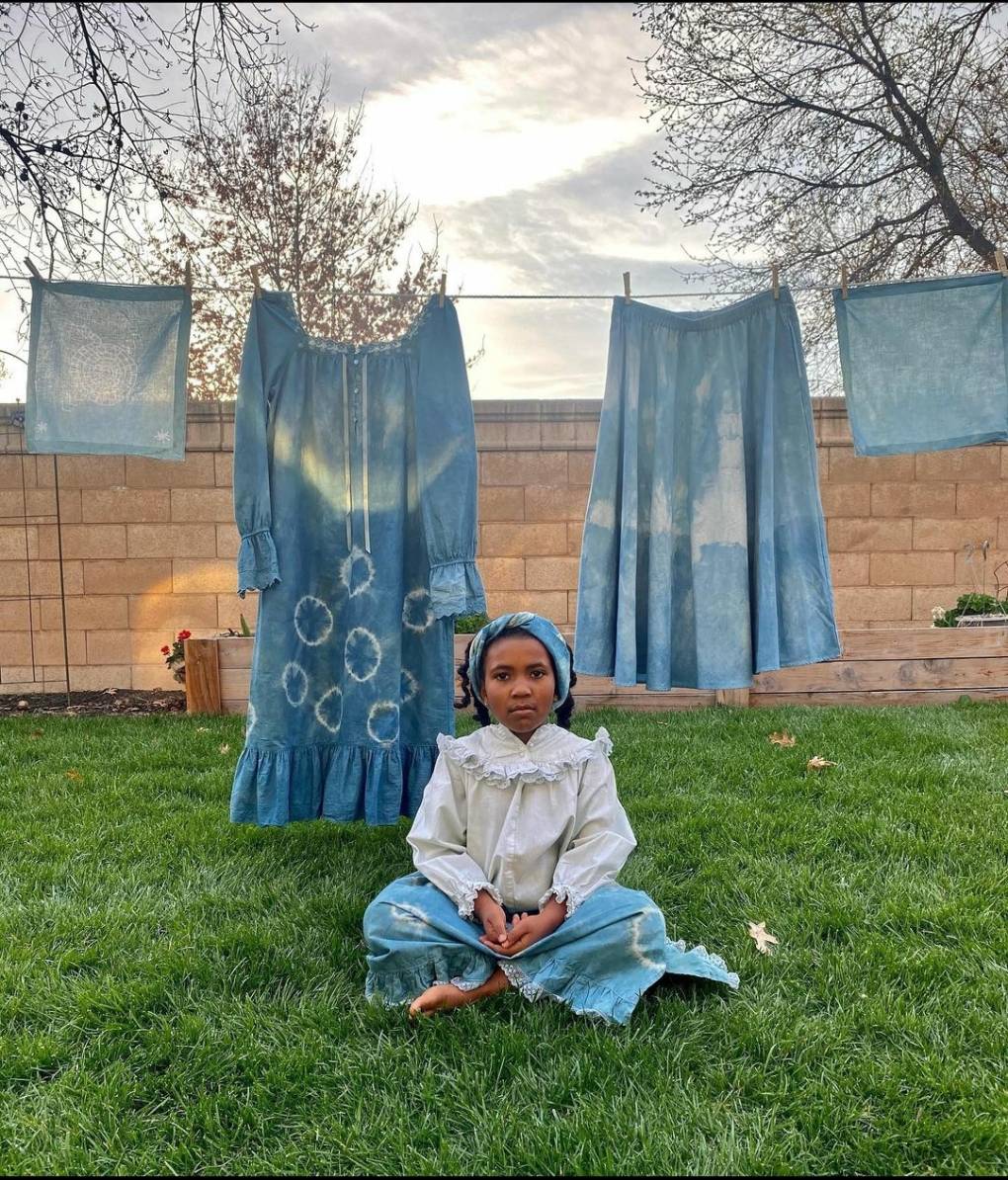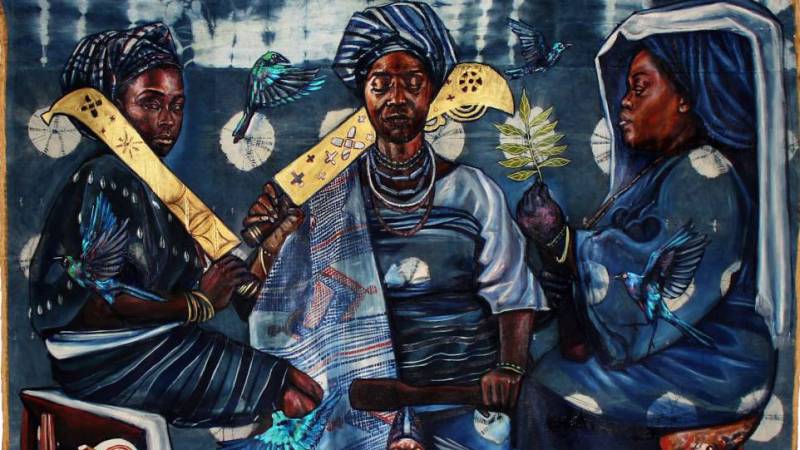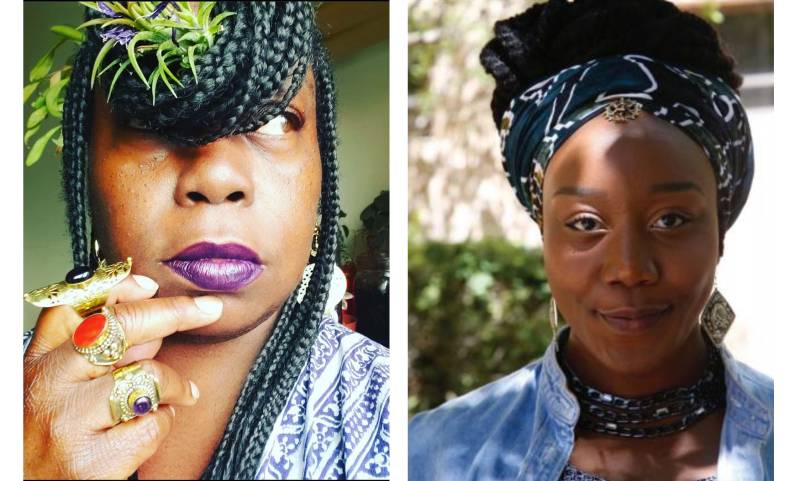The leaves from indigo trees have been used to dye fabric for ages. Through this one plant, one can tell the story of royalty, enslavement and the African diaspora.
The use of indigo dye reportedly originated in India. But for centuries it’s been used amongst nobles in West Africa, where fabrics were made so appealing they were once used as currency. When enslaved Africans were brought to the United States, their ability to harvest and use indigo was at one point more lucrative than cotton.
Now, in an exhibition at SOMArts titled The Indigo Project, a duo of Bay Area-based curators explore the common thread between African descendants in the United States, deep blue dye, and the fabrics we use for art and fashion.
Reflecting this history through an art exhibit is an idea that initially came to Bushmama Africa, an artist and community priest, as she sat in New Orleans’ Congress Square on Halloween in 2017. While she can trace her family’s lineage back to the area, she says, she was looking for something deeper than DNA. She was on a spiritual mission.
“I needed to figure out what was the thread between indigo, denim and cotton, as it relates to us as Africans and African Americans,” says Bushmama.

She began reading and researching, as well as reaching out to people like Isha Rosemond. A post-disciplinary artist and founder of the Black Freedom Fellowship, Rosemond is no stranger to the overlap of art and the African diaspora — whether raising funds for artists in Haiti through the Black Freedom Fund, or being an an artist in residence in the Brazilian organization Mirante Xique Xique.



